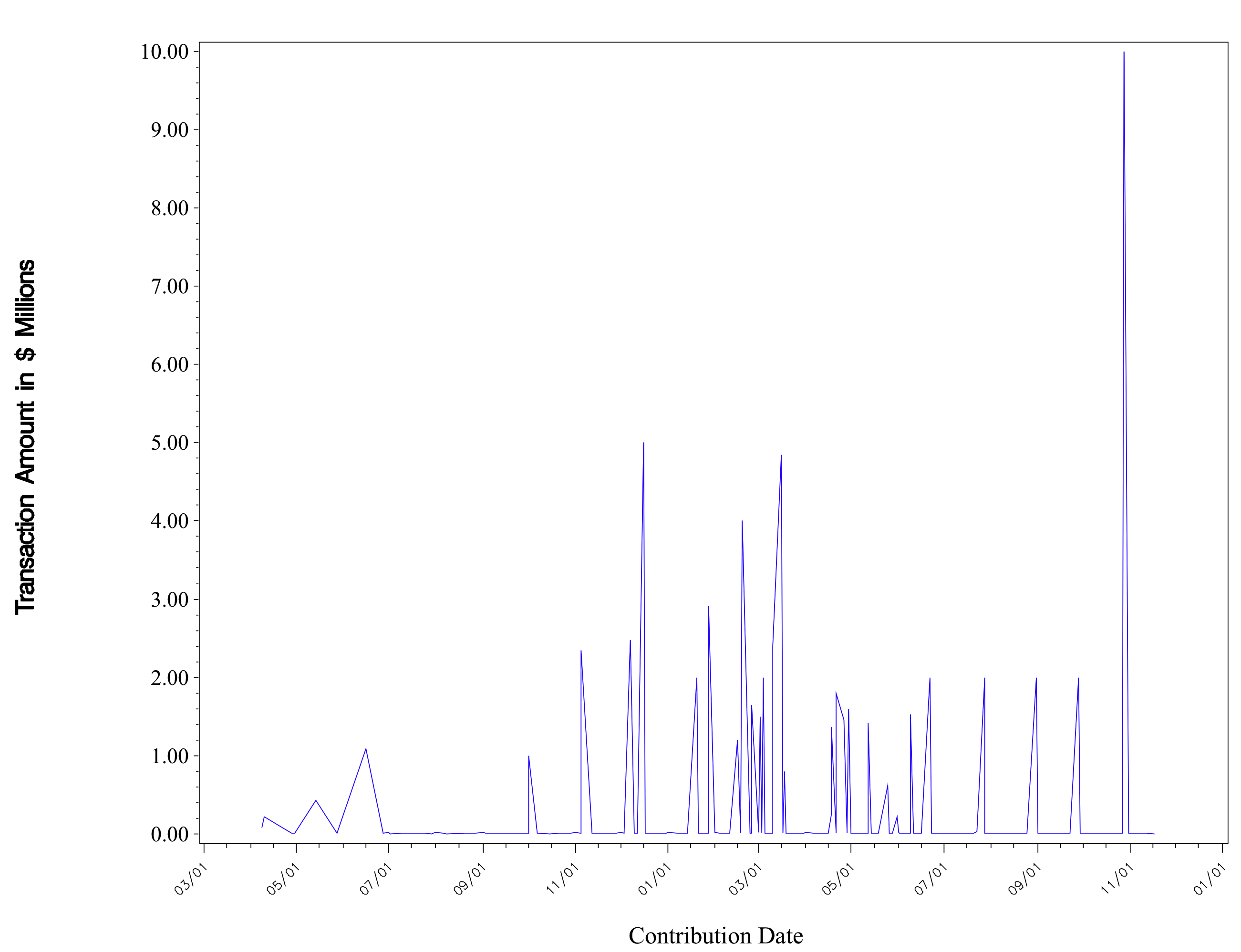The U.S. presidential election of 2016 featured frontal challenges to the political establishments of both parties and ended in perhaps the most shocking upset in American political history. Neither the U.S. nor the world seems to have gotten over the experience.
All sorts of bizarre claims have been advanced about what happened. The latest is that Donald Trump did not really want to win. But data on political money that we analyze in our new paper are inconsistent with that contention.
The graph displayed below shows just how far off is the claim that Trump did not contribute to his own campaign.
Trump Total Loans and Contributions to Campaign

Source: Calculated from Data for Ferguson, Jorgensen, and Chen, INET Working Paper No. 66; FEC Data
As the chart shows, Trump steadily advanced money in the form of both loans and contributions to his campaign, including some very substantial late contributions. Perhaps even more importantly for understanding the future, the Trump campaign (including allied SuperPacs and 527s) raised and spent more than $861 million—within reasonable hailing distance of the Clinton campaign’s $1.4 billion—although its serious fundraising began much later. Our paper analyzes the sources of that late money in detail for the first time.
The study also looks broadly at patterns of industrial structure and party competition in both the major party primaries and the general election. It attempts to identify the genuinely new, historically specific factors that led to the upheavals that shook the entire political system. It points especially to the steady growth of a “dual economy” that locks more and more Americans out of the middle class and into a life of unsteady, low-wage employment and, all too often, steep debts.
The paper draws extensively on a newly-assembled, more comprehensive database of political contributions to identify the specific political forces that coalesced around each candidate. It considers in detail how different investor blocs related to the Republican Party and the Trump campaign as the campaign progressed, as well as the role small contributors played in the various campaigns, especially that of Vermont Senator Bernie Sanders. It also critically evaluates claims about the final weeks of the election in the light of important overlooked evidence—including not only a huge wave of dark money spent on behalf of the Trump campaign, but a parallel wave of campaign finance that helped turn back the Democrats’ attempt to win the Senate.







